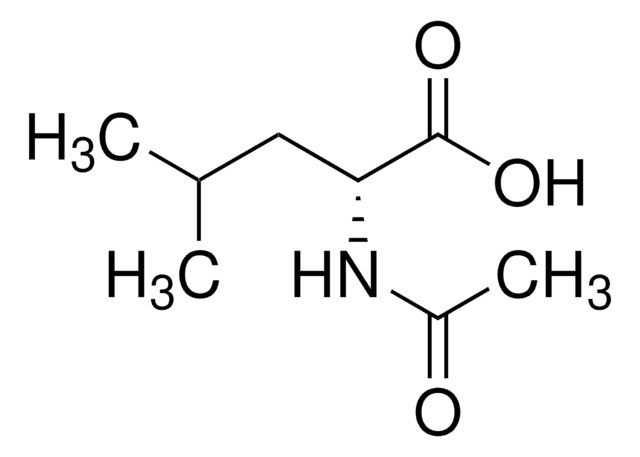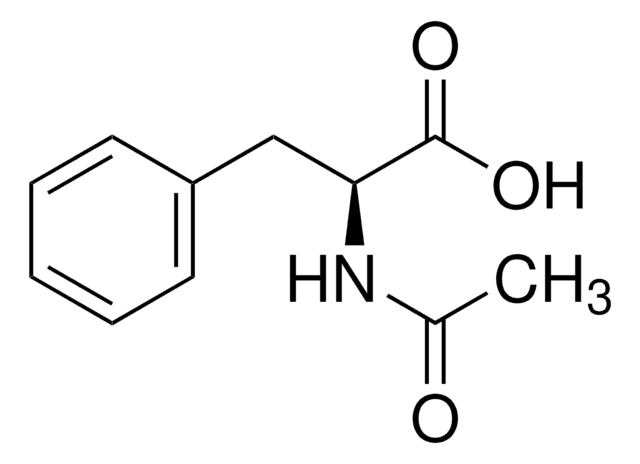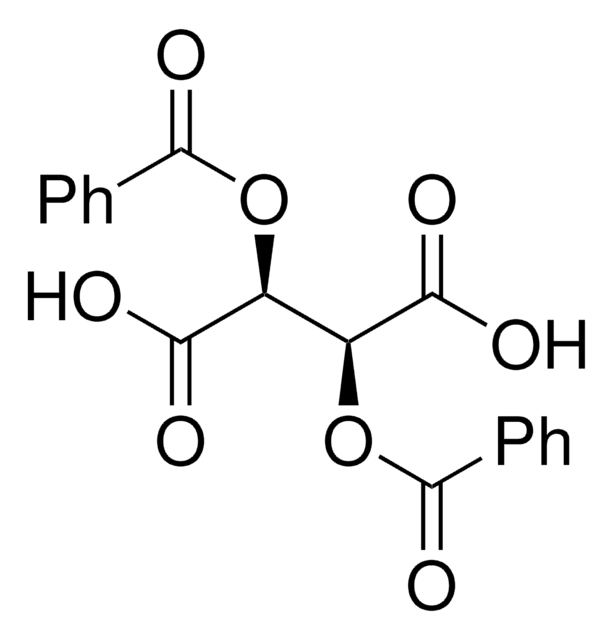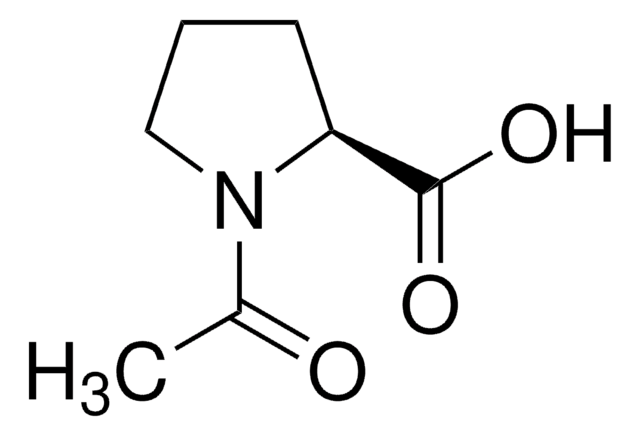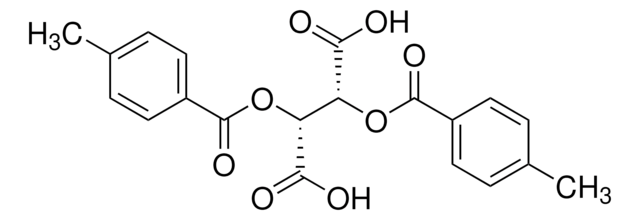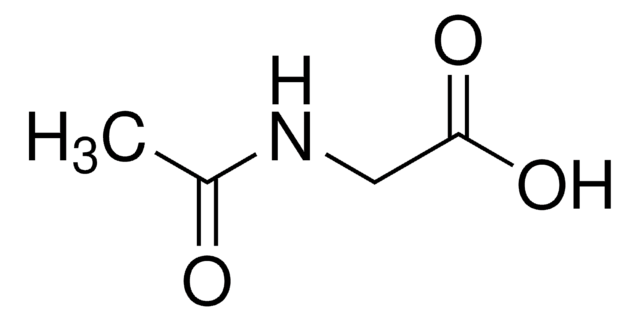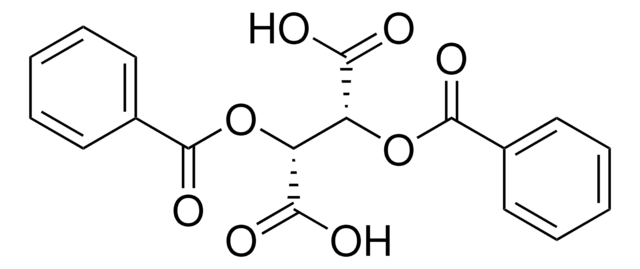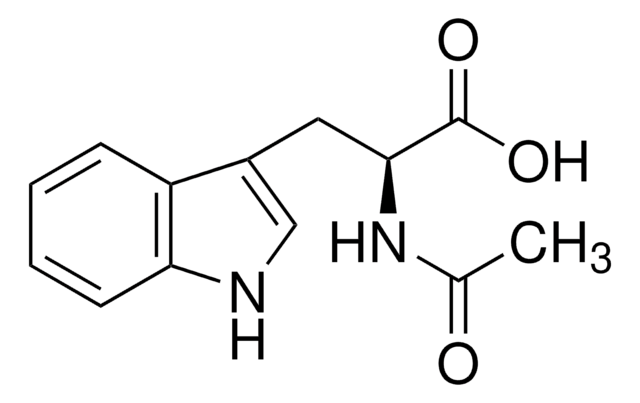441511
N-Acetyl-L-leucine
99%, for peptide synthesis, ReagentPlus®
Synonyme(s) :
N-Acetyl-L-(-)-leucine, Acetylleucine
About This Item
Produits recommandés
product name
N-Acetyl-L-leucine, ReagentPlus®, 99%
Gamme de produits
ReagentPlus®
Pureté
99%
Forme
solid
Activité optique
[α]25/D −23±3°, c = 2 in ethanol
Capacité de réaction
reaction type: C-H Activation
reaction type: solution phase peptide synthesis
Pertinence de la réaction
reagent type: catalyst
reaction type: Peptide Synthesis
Pf
187-190 °C (lit.)
Application(s)
peptide synthesis
Groupe fonctionnel
amine
carboxylic acid
Chaîne SMILES
CC(C)C[C@H](NC(C)=O)C(O)=O
InChI
1S/C8H15NO3/c1-5(2)4-7(8(11)12)9-6(3)10/h5,7H,4H2,1-3H3,(H,9,10)(H,11,12)/t7-/m0/s1
Clé InChI
WXNXCEHXYPACJF-ZETCQYMHSA-N
Vous recherchez des produits similaires ? Visite Guide de comparaison des produits
Informations légales
Code de la classe de stockage
11 - Combustible Solids
Classe de danger pour l'eau (WGK)
WGK 3
Point d'éclair (°F)
Not applicable
Point d'éclair (°C)
Not applicable
Certificats d'analyse (COA)
Recherchez un Certificats d'analyse (COA) en saisissant le numéro de lot du produit. Les numéros de lot figurent sur l'étiquette du produit après les mots "Lot" ou "Batch".
Déjà en possession de ce produit ?
Retrouvez la documentation relative aux produits que vous avez récemment achetés dans la Bibliothèque de documents.
Notre équipe de scientifiques dispose d'une expérience dans tous les secteurs de la recherche, notamment en sciences de la vie, science des matériaux, synthèse chimique, chromatographie, analyse et dans de nombreux autres domaines..
Contacter notre Service technique